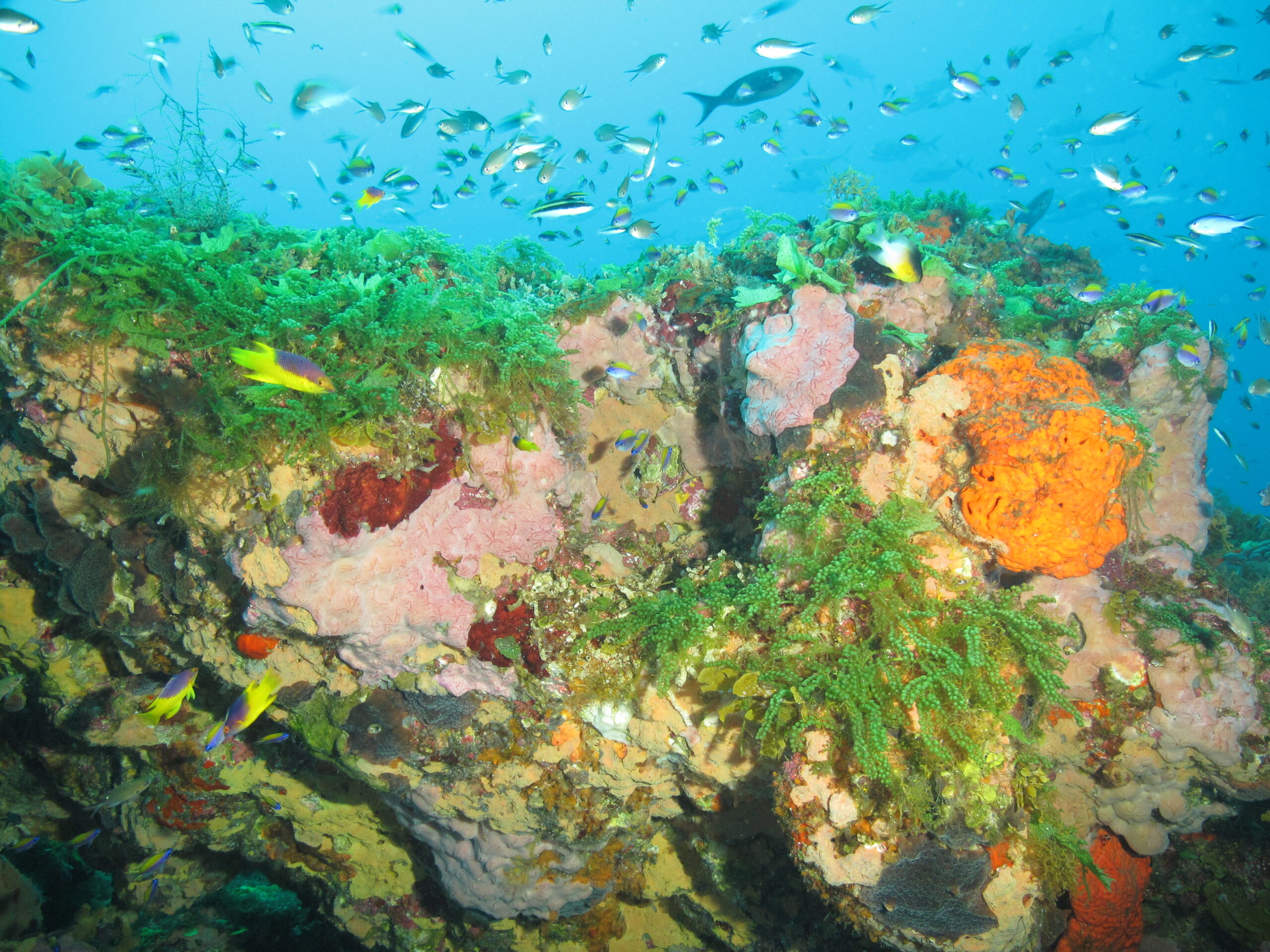Off the coast of Texas, spectacular coral reefs in the Flower Garden Banks National Marine Sanctuary provide a home for sea turtles, manta rays, and all manner of ocean life. Now, we have a chance to expand the sanctuary to protect more of these special places.
About 100 miles off the coast of Texas, dozens of “banks,” or underwater mountains, protrude from the sea floor, rising nearly to the surface. On the slopes of these underwater mountains, hidden beneath the water of the Atlantic ocean, sit spectacular coral reefs providing a home for sea turtles, manta rays, and all manner of ocean life.
The Flower Garden Banks National Marine Sanctuary protects three of these underwater mountains and now, we have a chance to expand the sanctuary to protect more of these special places. Recognizing that this sanctuary provides critical habitat for endangered species and that these fragile ecosystems need our protection, NOAA has proposed expanding the sanctuary from 3 to 17 underwater mountain banks, tripling the number of square miles that are protected.
There are three things you can do to support the expansion and protection of this special ecosystem:
Submit public comments supporting the expansion.
Publicly submitted comments have an impact and help agency policy makers improve federal regulations. You can visit federalregister.gov to comment directly on the proposed rule until July 3, 2020. Below is a sample comment you can copy and paste as your comment, and add your own input if you like. NOAA will accept anonymous comments (enter “N/A” in the required fields if you wish to remain anonymous).
Below is a sample public comment and testimonial you can copy and paste, and add your own thoughts:
Re. NOAA-NOS-2019-0033
I am writing to (1) oppose the proposed expansion of the Flower Garden Banks National Marine Sanctuary (FGBNMS) in its current form; (2) urge NOAA to expand the boundaries and protections of the FGBNMS to a greater extent than considered in the proposed expansion; and (3) urge NOAA to apply existing restrictions to the FGBNMS expansion with no exemptions for spearfishing, longline fishing, or any other destructive fishing practice within sanctuary boundaries.
Please consider implementing Alternative 5 from the DEIS, which would provide greater protections to the FGBNMS than the final alternative chosen in the EIS. Alternative 5 would increase the sanctuary boundaries to include 57 national significant natural features and eight nationally significant cultural and historic resource sites. Even Alternative 3, which was identified as the “preferred alternative in the DEIS,” would be preferable to the final alternative chosen. Alternative 3 would have expanded the existing sanctuary from 56 square miles to 383 square miles and includes a total of 18 nationally significant natural features within 11 discrete proposed boundary areas.
The FGBNMS mission is to identify, protect, conserve, and enhance the natural and cultural resources, values, and qualities of FGBNMS and its regional environment for this and future generations. The FGBNMS provides a wide range of habitat conditions that support several distinct biological communities, including the northernmost coral reefs in the continental United States. Sanctuary formations provide the foundation for essential habitat for a variety of species, including sea turtles, sharks and other important marine wildlife.
In order to realize the FGBNMS mission, NOAA must restrict fishing in the sanctuary boundaries. Allowing spear fishing or longlines in FGBNMS boundaries would otherwise undermine the proposed expansion’s prohibition from taking any marine mammal or sea turtles.
Thank you for your consideration.
Sincerely,
[Your Name]
Register for, and give testimony at, one of the three public hearings.
The sanctuary will host three virtual public meetings for the public to learn more about the proposal and submit comments. All meetings are in Central Time. To participate in the public hearings, online registration is requested in advance via the following links. If you are unable to participate online, you can also connect to the public hearings using the phone numbers provided below. After registering, you will receive a confirmation email containing information about joining the webinar.
- June 8, 2020, 1:00 p.m.—3:00 p.m. CDT
- Registration: https://attendee.gotowebinar.com/register/9162740973626770700
- Phone: +1 (213) 929-4232 PIN: 704-409-034
- June 8, 2020, 6:00 p.m.—8:00 p.m. CDT
- Registration: https://attendee.gotowebinar.com/register/1668176149101021196
- Phone: +1 (213) 929-4232 PIN: 682-728-246
- June 11, 2020, 6:00 p.m.—8:00 p.m. CDT
- Registration: https://attendee.gotowebinar.com/register/5569362151706075916
- Phone: +1 (415) 655-0052 PIN: 486-551-096
If you would like to provide comment during the hearings, please sign up in advance. Select “yes” during the online registration. The line-up of speakers will be based on your date and time of registration.
If you will be participating by phone, please send an email to fgbexpansion@noaa.gov to add your name to the speaker list.
Learn more about expanding the Sanctuary
Learn more about the Sanctuary and the expansion by watching the webinar we hosted on May 26th and share what you learn with your friends!
Background
Building on more than 30 years of scientific studies, NOAA is issuing a notice of proposed rulemaking to expand Flower Garden Banks National Marine Sanctuary. The proposal would expand the sanctuary from 56 square miles to 160 square miles to protect additional critical habitat in the Gulf of Mexico.
The existing Flower Garden Banks National Marine Sanctuary was designated in 1992 and added to in 1996. It includes the northernmost coral reefs in the continental United States, deepwater reef communities, and other essential habitats for a variety of marine species.
The proposed rule for expansion would add 14 additional reefs and banks to the sanctuary. These reefs provide important habitat for recreationally and commercially important fish, as well as threatened or endangered species of manta rays, sea turtles, and corals.
This proposed rule would extend existing sanctuary protections to these new areas to limit the destructive impact of activities related to fishing with bottom-tending gear, ship anchoring, oil and gas exploration and production, and salvage activities on sensitive biological resources.





